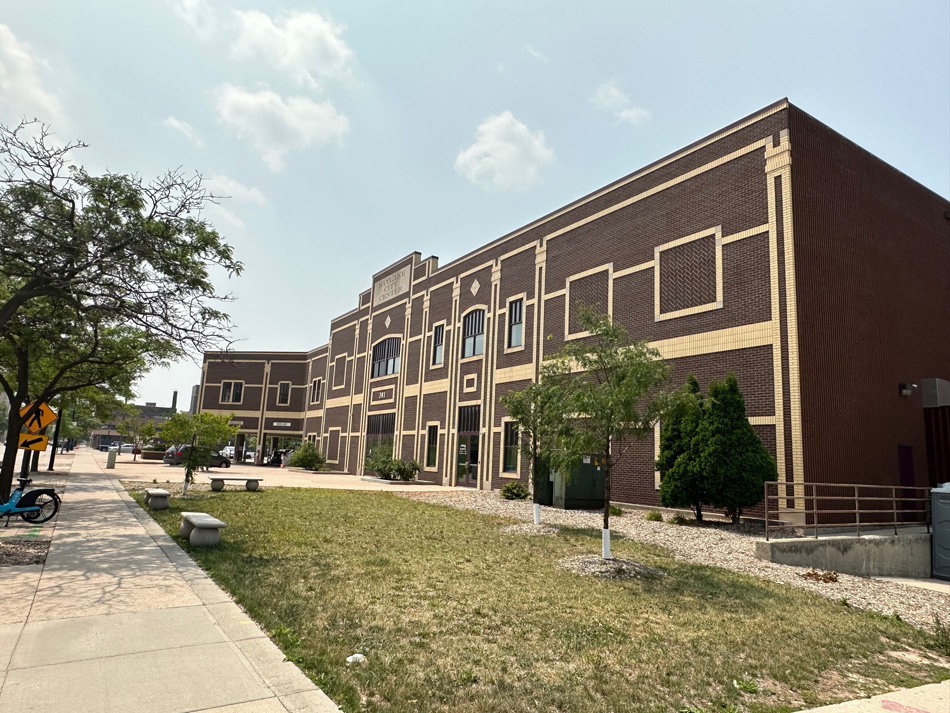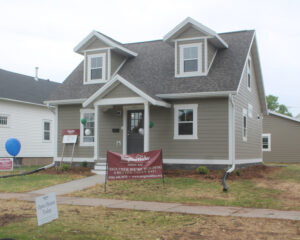
By Kris Leonhardt
Editor-in-chief
As generational cycles occur, negative patterns and traits are known to transfer through multiple generations via learned behavior, family dynamics and environment. We continue to explore five northeast Wisconsin intergenerational family issues — physical health, alcoholism and drug use, mental health, education and housing — and what some organizations are doing to address the trends.
NORTHEAST WISCONSIN – Passed in 1862, the Homestead Act championed the settlement of the United States western territory by granting adult citizens 160 acres of public land in exchange for five years of residency.
Land ownership soon became defined as “The American Dream.”
Today, the majority of Americans still view homeownership in that way.
A 2022 Mynd Consumer Insights Report showed that 78% of Americans identify homeownership with the “American Dream.”
But, today many struggle to obtain that dream or reside passively in the homestead that was once the realized dream of their ancestor and has now become inadequate but they are unable to find the resources to make the change — sometimes due to adverse childhood experiences, or ACEs.
The National Library of Medicine article “Evolving Our Understanding: Housing Instability as an ACE for Young Children” stated that “poverty and ACEs tend to co-occur; the impacts are often intergenerational. Structural inequities in our culture embedded in institutions, policies and practices impact what individuals can access (e.g., housing, jobs) and, consequently, how well they are able to thrive.”
Just the presence of housing insecurity can place the next generation at risk of an ACE.
“The experience of housing insecurity, defined as high housing costs, poor housing quality, unstable neighborhoods, overcrowding and especially homelessness, places children at risk of ACE exposure,” the National Healthcare for the Homeless Council stated in a report.
A Social Service Review article — “Housing Insecurity, Maternal Stress and Child Maltreatment: An Application of the Family Stress Model” — stated that “children at risk for neglect were significantly more likely to be from families experiencing housing unaffordability and housing instability, and their mothers reported higher maternal stress”
Times are getting harder
And things aren’t getting any easier for Kewaunee and Brown County families, as affordable home stock and rental properties become insufficient.
In a March 2023 report from the Wisconsin Realtors Association, median home prices have continued to rise, while home sales are down.
Brown County saw the median home price grow from $257,550 to $280,000 — an 8.7% increase — since March of 2022, while home sales dropped from 590 to 461 — a 21.9% decrease.
In Kewaunee County, the median price grew from $165,000 to $220,000 — rising 33.3% — while sales dropped from 49 to 33 — a 32.7% drop.
And, to make matters worse, it is getting more difficult to find a home to find in general.
According to the 2020 Green Bay home market analysis, which includes Oconto, Brown and Kewaunee counties, housing market conditions in the area are tight, “with an estimated 1.1% vacancy rate, down from 2.0% in April 2010, when conditions were soft. During 2019, approximately 5,675 new and existing homes sold, a decrease of 240 homes, or 4%, from a year earlier (Metrostudy, A Hanley Wood Company, with adjustments by the analyst). Demand is expected for 2,275 new homes during the forecast period. The estimated 230 homes currently under construction will satisfy part of the demand.”
And the Green Bay Equal Rights Commission found that it was particularly difficult for certain demographics to access affordable housing as the availability becomes more scarce.
“This struggle, the commission found, has become particularly acute for specific groups of people as the lack of affordable housing stock has given landlords an excessive amount of power in the rental marketplace,” a January 2023 report from the commission stated.
“Single women, particularly victims of intimate partner violence, struggle to secure safe, high-quality affordable housing as they transition from temporary shelter facilities.
“LGBTQ youth, some of whom are estranged from parental support, struggle to find quality affordable housing and/or fear available rental spaces will be safe for them.
“For African American families in Green Bay, the struggle to find housing is particularly acute, as disproportionate, unwarranted surveillance by landlords combined with disproportionate, unwarranted surveillance by the police seriously limits many Black families’ rights to safe, affordable, high-quality housing in Green Bay.
“Immigrants and refugees, particularly large families, struggle to find good housing because they face language barriers or overwhelming economic barriers from landlords.”
What is being done
The past year has seen the introduction of state assistance programs and local housing projects designed to get right to the heart of the affordable housing issue.
In June, Gateway Collective announced its first “socially inclusive” housing project — City Center Lofts — in downtown Green Bay.
“Rents are astronomically high, creating a striking lack of housing that working people in communities across the country can afford,” explained Lexie Wood, executive director of The Gateway Collective, referencing a 2020 Housing Market Study commissioned by Green Bay’s Redevelopment Authority which identified “a notable housing gap and projected that the city will need between 3,314 and 7,441 rental units and 4,052 and 9,098 owner-occupied units by 2040.”
Early this year, the U.S. Department of Housing and Urban Development announced over $956 million in funding for affordable housing, community development and homelessness assistance — nearly $97 million allocated for Wisconsin programs.
“Viable communities must promote integrated approaches to develop decent housing, suitable living environments and expand economic opportunities to the most vulnerable,” said HUD Secretary Marcia L. Fudge. “These funds allow communities to address their unique needs by prioritizing what matters most to their residents and letting them own their investments in community development through these important federal resources.”
This month, NeighborWorks Green Bay celebrated its 461st community project — a 1,242-square-foot home in the Shipyard District.
They partner with the Green Bay Area Public Schools, Northeast Wisconsin Technical College and local trades organizations through the Bridges Construction and Renovation Program which teaches high school students how to build and renovate homes.

The organization works to develop housing that “families in Green Bay can afford,” providing “housing options and stability for families at-risk or with special needs.”
Program coordinators say that one in 20 children in the Green Bay Area School District is homeless and one in four lives at or below the poverty line.
In June, Gov. Tony Evers also signed five bipartisan bills to help expand access to safe, affordable housing.
“The lack of affordable housing across Wisconsin is at a critical level,” said Wisconsin Builders Association President Mike Howe. “Funding loans through the Wisconsin Housing and Economic Development Authority for workforce housing residential infrastructure costs, main street multifamily remodeling projects, the conversion of commercial buildings for housing and single-family remodeling projects is an important way to lower the cost of housing for many working families throughout Wisconsin. Excessive and outdated regulations add over $93,000 to the final price of a new home, increasing the total by nearly 24 percent. Coupled with 75 percent fewer lots and 55 percent fewer new homes than pre-recession averages, volatile interest rates and inflated costs of materials, these bills will go a long way in assisting a variety of challenges in the creation of workforce housing.”
This story is part of the NEW (Northeast Wisconsin) News Lab’s fourth series, “Families Matter,” covering issues important to families in the region. The lab is a local news collaboration in northeast Wisconsin made up of six news organizations, which includes Green Bay Press-Gazette, Appleton Post-Crescent, FoxValley365, The Press Times, Wisconsin Public Radio and Wisconsin Watch. The University of Wisconsin-Green Bay’s Journalism Department is an educational partner. Microsoft is providing financial support to the Greater Green Bay Community Foundation and Community Foundation for the Fox Valley Region to fund the initiative. The mission of the lab is to “collaborate to identify and fill information gaps to help residents explore ways to improve their communities and lives — and strengthen democracy.”
